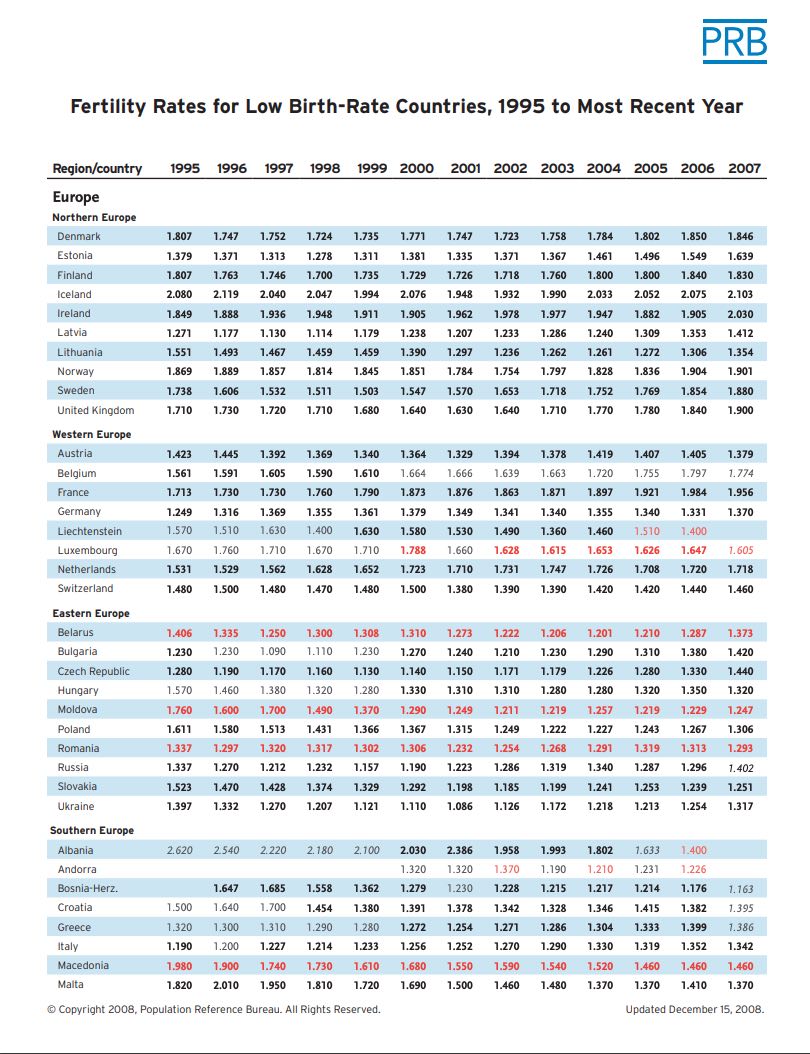497 Search Results Found For : "Low-priced"

Table: Tracking Fertility Rates in Low-Fertility Countries
(2009) The extremely low fertility in most developed and many developing countries has many implications for the future age structure and labor force in these countries.

Tracking Fertility Rates in Low-Fertility Countries
(2009) The extremely low fertility in most developed and many developing countries has many implications for the future age structure and labor force in these countries.

Project: Demography and Economics of Aging and Alzheimer’s Disease
How Neighborhoods Affect the Health and Well-Being of Older Americans
Neighborhood characteristics affect people of all ages, but older adults—classified here as adults over age 50—may be affected more than other groups.

Like the United States and Europe, the Asia-Pacific Region Is Experiencing Low Fertility and Population Aging
As the Asia-Pacific region's population shifts due to low fertility and societies age, women may face specific challenges tied to factors like their longevity, financial resources, and caregiving responsibilities.
United Nations Raises Projected World Population
(2013) The United Nations Population Division has just released its comprehensive estimates and projections, World Population Prospects: The 2012 Revision. The results show a larger global population size in 2050, 9.6 billion, up from the 9.3 billion that the UN projected in its 2010 Revision. A major reason for the higher projection is higher fertility (birth rates) in some countries than previously estimated, particularly in Africa. Much of that information comes from recent demographic surveys.

Project: KIDS COUNT
The Risk of Negative Child Outcomes in Low-Income Families
(2006) The child poverty rate has become one of the most widely used indicators of child well-being in the United States.

